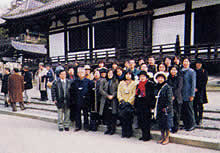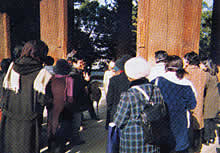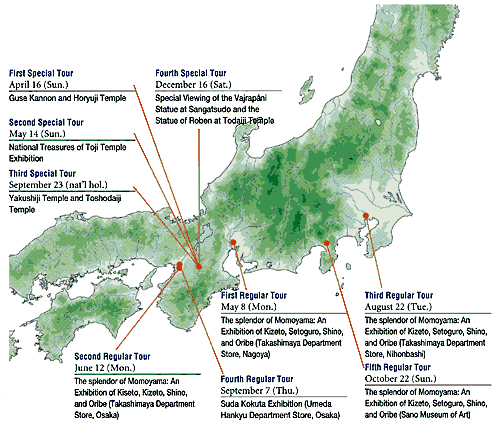| “Last year, I participated in
a number of different tours. After having a chance to closely study and
listen to explanations about Buddhist statues, my way of looking at them
changed dramatically. In the past, when I visited a temple, I went quickly through it as if I was sightseeing and was satisfied with only a single visit. But after taking the time to observe the beauty of each of the Buddhist images and the architectural structure of the temple and notice things I had never seen before, I found that visiting a temple is a fascinating thing. On the tour to Todaiji Temple, I was very pleased to have had a chance to see the statue of Vajrapãni, which is only opened to the public one day each year. I am looking forward to being able to participate in more tours in the future.” |
|
| Matsushita Yumi, Takatsuki | |
 |
 |
| “The tour to see the Vajrapãni
statue at Sangatsudo and the statue of Roben at Todaiji Temple was the first
Miho Museum tour I participated in. Speaking of Todaiji Temple, I am almost
sure I went there on a school trip when I was in elementary school. I still
remember the deep impression seeing the largest Buddha in Japan made on
my young mind. After many years, I finally had a chance to visit the temple
for a second time. The statue of Vajrapãni, a hidden Buddha that is only viewable once a year, is famous enough to have a photograph of it in most school textbooks. But seeing the real thing in front of my eyes, I was overwhelmed by the strength and power of the statue. The statue’s overly angry countenance, in an expression of his might as a protector of people more than against his enemies. This work seemed to me to be the acme of accomplishment. There were others like the comparatively fierce Kongorikishi and the statue of Bosatsu discreetly pressing its hands together in prayer, and the Buddhas from the Tenpyo to the Muromachi Period that were lined up in Todaiji’s oldest structure, Hokkedo (Sangatsudo). From these images, I learned about the oldest culture in Japan and was impressed by our country’s long history. From the curator’s explanation, I was able to enjoy much more than just looking. I learned the meaning of different parts of the statues and at the same time learned how to appreciate them. In the past, I had always just moved from one display to the next after seeing each of them once. But this time, after listening to the curator’s explanations, I went through again and was able to see things in quite a different way the second time. Blessed with fine weather the day we visited, I had a chance to leisurely enjoy the temple and improve my understanding of the place. I want to express my appreciation for a magnificent day.” |
|
| Ota Hitomi, Kyoto | |
 |